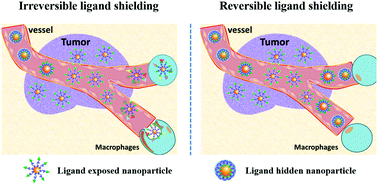Strategies and challenges to improve the performance of tumor-associated active targeting
Abstract
Over the past decade, nanoparticle-based drug delivery systems have been extensively explored. However, the average tumour enrichment ratio of passive targeting systems corresponds to only 0.7% due to the nonspecific uptake by normal organs and poor selective retention in tumours. The therapeutic specificity and efficacy of nano-medicine can be enhanced by equipping it with active targeting ligands, although it is not possible to ignore the recognition and clearance of the reticuloendothelial system (RES) caused by targeting ligands. Given the complexity of the systemic circulation environment, it is necessary to carefully consider the hydrophobicity, immunogenicity, and electrical property of targeting ligands. Thus, for an active targeting system, the targeting ligands should be shielded in blood circulation and de-shielded in the tumour region for enhanced tumour accumulation. In this study, strategies for improving the performance of active targeting ligands are introduced. The strategies include irreversible shielding, reversible shielding, and methods of modulating the multivalent interactions between ligands and receptors. Furthermore, challenges and future developments in designing active ligand targeting systems are also discussed.



 Please wait while we load your content...
Please wait while we load your content...